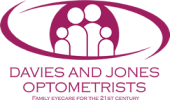This usually begins in the early teens and typically gets progressively worse until around eighteen years of age.
People with myopia require glasses, contact lenses, or surgery to see things clearly in the distance.
What Causes Myopia?
An eye becomes myopic when light focuses before it reaches the retina. This happens when the transparent front surface of the eye (the cornea) bends light too much, the length of the eyeball is too long, or a combination of the two.
It’s not known for sure what causes Myopia, but research suggests several things are could be linked to it.
Long periods of close work
Spending lots of time looking at things that are close to you – for example reading, doing lessons online, handheld videogames – are thought to make myopia more likely.
Staying indoors
Spending lots of time inside increases the chances of becoming shortsighted. Try to make sure children spend at least one hour per day outside.
Myopia in the family
If one or both parents are myopic, it is more likely that children will become shortsighted. If there is family history, please book regular checks for your child.
How will I know if my child becomes myopic?
Your child may tell you that they cannot see things that are far away, for example the board in school or the television.
Sometimes children do not notice that their vision is blurred. If this is the case, you may notice them squinting or rubbing their eyes when trying to look at things that other people can see easily.
Alternatively, you may hear from their school vision screening service, or the teacher might mention having to move your child to sit at the front during lessons.
Your child may complain that they get headaches or have to strain to see things.
If any of these things occur, please contact us to book your child in for a sight test.
What can be done if my child becomes myopic?
Glasses and contact lenses are the most common ways to correct short sightedness and newer designs of lenses can even slow down myopic progression in some children.
MiYOSMART
MiYOSMART spectacle lenses can be used just like normal glasses.
These lenses are impact resistant and also UV blocking to protect your child’s eyes. You can read more about these lenses here.
MiSight Lenses
MiSight lenses are soft daily contact lenses.
They are worn just like normal soft daily disposable contact lenses. To get the myopia management benefit, the lenses must be worn for six days a week for at least ten hours per day.
Contact lenses do have a slightly increased chance of eye infection, but as long as you follow your optician’s instructions and look after your lenses well, the risk is low. You can read more about these contact lenses here.
EyeDream Lenses
EyeDream lenses are rigid gas permeable lenses. They are worn at night, while your child is sleeping. In the night, they reshape a small part of the front of the eye (the cornea). This reshaping is completely painless and reversible.
In the morning, you remove the lenses and clean and store them as you would any reusable contact lens.
Wearing contact lenses at night does increase the risk of eye infection, but as long as you observe good lens hygiene, the risk is low.
You can read more about orthokeratology here.
What are Myopia Management results longterm?
Myopia Management is very new, so there is little evidence on how long-lasting the effects of the treatment will be. Further research is currently investigating this further.
Myopia Management does not cure short sightedness. Its aim is to slow (or perhaps stop) myopia from worsening.
There is no charge for sight tests for children under 16.
